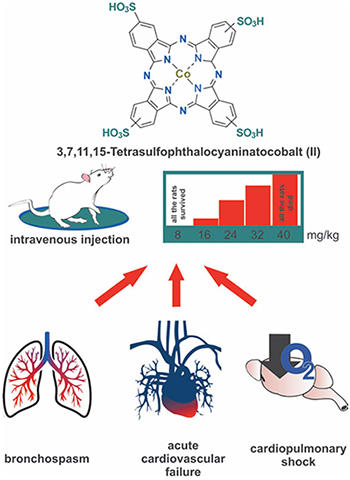Журнал "Макрогетероциклы"
Navigation
News
Impact Factor 2021 = 1.200 has been issued by ISI Web of Knowledge (JCR 2021).
Search
ISSN 1998-9539
Assessment of Acute Toxicity of Cobalt Tetrasulfophthalocyaninate by Intravenous Injection on Wistar Rats
Increased number of oncologic diseases stipulates urgent need to create new highly effective anticancer drugs, while one of the important directions is the development and study of toxic properties of new macroheterocyclic compounds. The study was conducted on 70 outbred Wistar rats of both sexes. The article presents the results of determining the acute toxicity of cobalt tetrasulfophthalocyaninate by intravenous injection and microscopic picture of brain, myocardium, lungs, liver and kidneys when stained with hematoxylin and eosin. It was found that with a single intravenous injection in accordance with State Standard 12.1.007-76 cobalt tetrasulfophthalocyaninate was referred to the 3rd class of mild-toxic compounds. Half-lethal dose in intravenous injection was amounting to 22.6 mg/kg. Sexual differences in half-lethal dose were not revealed. Death of animals occurred in the first 5 minutes of the study from respiratory arrest. Typical changes of the myocardium detected during microscopic examination were the structural basis of acute heart failure with respiratory distress syndrome development, acute venous plephora of brain, liver, kidneys. One of the important links of thanatogenesis, apparently, was the combination of disseminated bronchospasm and acute changes in arterial link of heart vascular channel which caused terminal condition development in the form of pulmono-coronary shock.

| Attachment | Size |
|---|---|
| mhc191179k.pdf | 3.64 MB |
- 1234 reads
- Русский
